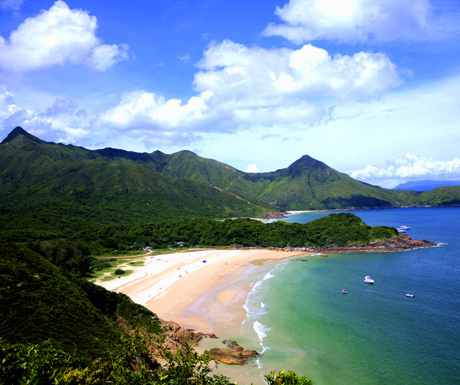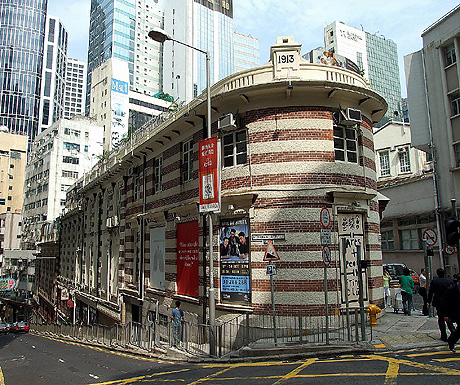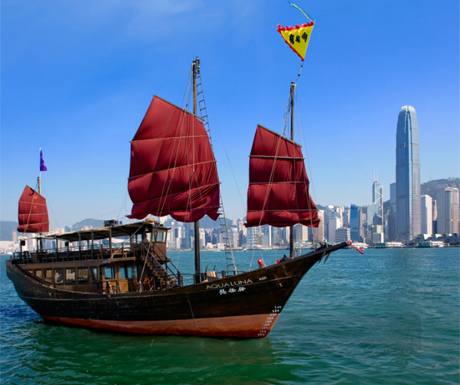In a city that is only 1,000 square kilometres, how much can there realistically be to do? Most visitors to Hong Kong scour the city from the Peak, shop till their hearts drop and eat well (click here to read our Top 10 European Restaurants in Hong Kong), but after your stomachs are full and your wallets are empty, what’s left?
Here are three alternative itineraries you can enjoy on your next trip to Hong Kong:
1. Go hiking
Despite its relatively small physical size, Hong Kong’s unique topography provides ample opportunities for nature lovers to explore the wilderness. Approximately only 30% of the land area is actually developed, and a large part of the remainder is specifically reserved as protected country parks and geo parks. The range of topography varies from open grasslands and dense woodlands that encase reservoirs, mountain peak ranges (including the “nine dragons” of Kowloon – a transliteral definition of Kowloon) that rise nearly 1,000 metres from sea level, to sparse, untouched white-sandy beaches that culminate in crystal clear waters that make you feel as if you’ve entered paradise.

As such, hiking (and camping, although not quite as rustic as you imagine it) is a popular activity among enthusiasts, hosting some of the most scenic vistas you would never expect from a trip to one of the world’s most dense cities. The trails range from simple walks upon paved roads, such as the family-friendly walk up Mount Butler/Mount Parker or up to The Peak, to scenic but easy walks along dirt roads such as Dragon’s Back that ends in Shek O, to difficult yet worthy and lengthy expeditions such as sections along the MacLehose Trail in northeastern Sai Kung.
2. Explore the colonial past
The British Empire governed Hong Kong for over 150 years, so it’s no surprise they left a lasting legacy in this small colony, the crown in the jewel of the Empire at its peak. Arguably, the quintessential British experience is to enjoy afternoon tea at The Peninsula. Afternoon tea is now as much a Hong Kong institution as it is British, with every eatery from small restaurants and cake cafes to cha-chaan-tengs (local restaurants) respectively serving their own twist of the classic.

Alternatively, explore the past in further detail with visits to museums, or key destinations where Victorian-era buildings and neoclassical-inspired structures have stood still, albeit currently used in an entirely more commercial form than previously intended, including the pictured Fringe Club, built in 1892. While many of the city’s glorious buildings were decimated to make room for ‘urban development’ in the past, the recent trend is towards conservation, and more heritage buildings are now appropriately repurposed and their interiors redesigned, while maintaining most of their previous facade.
3. Take a harbour cruise
The coastline and surrounding waters of Hong Kong is one of the busiest harbours in the world, and therefore one of the city’s greatest assets. It is no surprise that boat trips are popular, particularly in summer with a group of friends or to celebrate special occasions.
Aqua Luna offers high-end catered harbour cruises to celebrate such special occasions. The pictured Aqua Luna, with its bright red sails, is distinguishable from a distance. Modelled after an old Chinese junk boat, the handcrafted boat was was built specifically for the Aqua Restaurant Group, employing only traditional shipbuilding methods.

For a more cost-efficient option, there’s always the Star Ferry, an iconic institution that still traverses from Hong Kong Island to Kowloon. While the ride is much shorter now than it used to be thanks to heavy reclamation and the resulting inevitable narrowing of the harbour, it is still one of the city’s most incredible attractions, used as much as a mode of transport as a tourist hotspot.
For more incredible sights and sounds that make up Hong Kong, from the commonly visited sites to the more obscure, check out the official Hong Kong Tourism Board Facebook fan page, Discover Hong Kong.